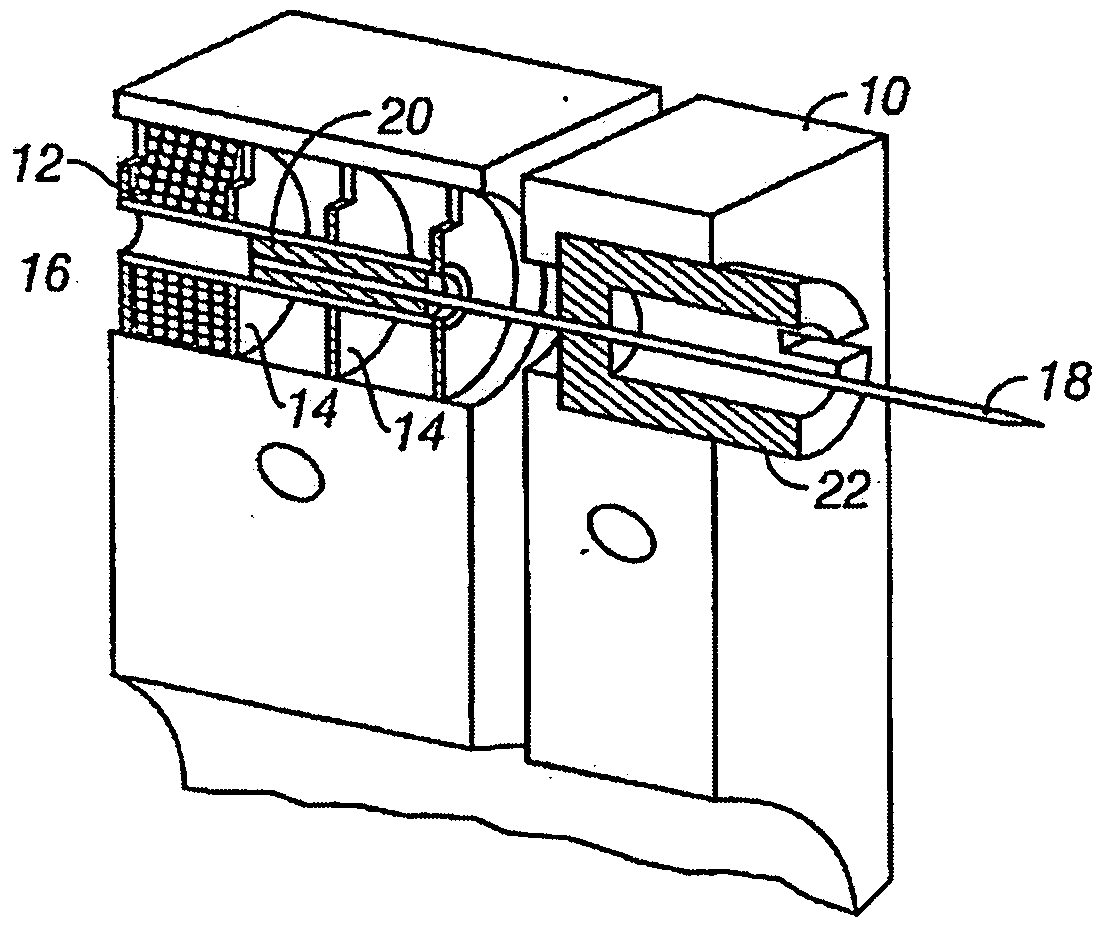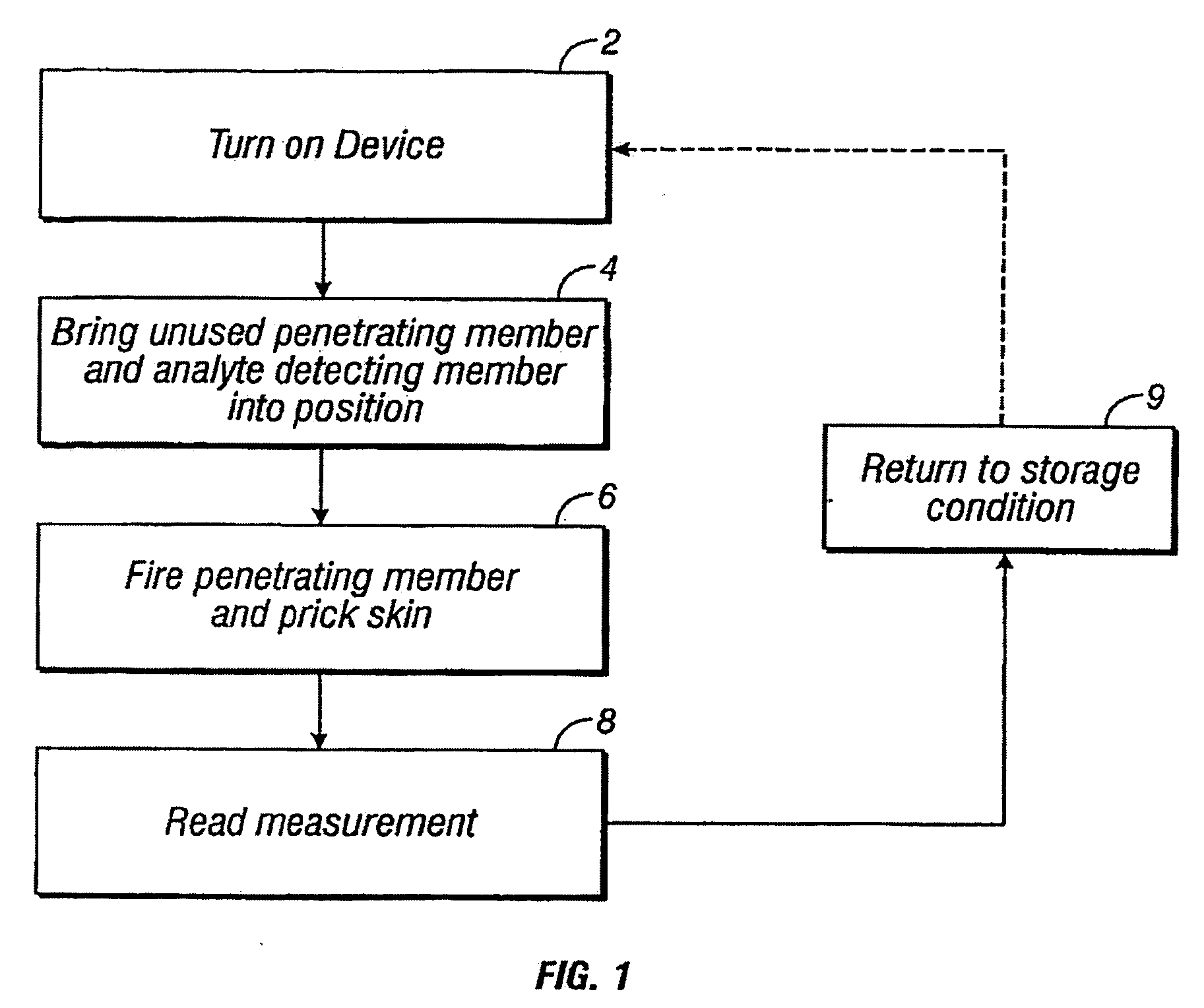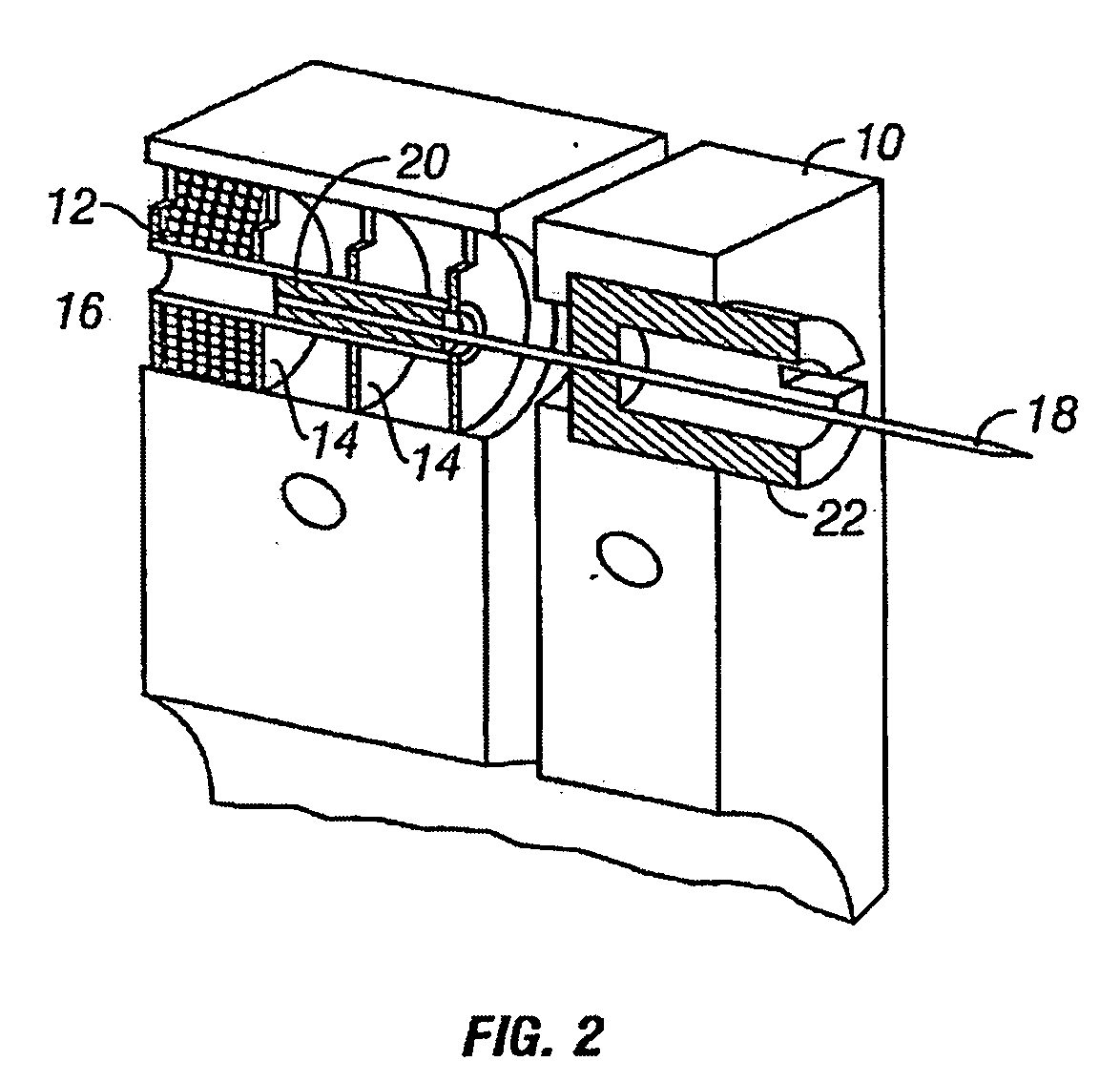Method and apparatus for analyte measurement test time
a technology of analyte and test time, applied in the field of analyte measurement, can solve the problems of multiple strikes due to recoil, patient disapproval, and inability to combine the lancing process with the sample acquisition and testing step, so as to improve the analyte measurement test time and convenience
- Summary
- Abstract
- Description
- Claims
- Application Information
AI Technical Summary
Benefits of technology
Problems solved by technology
Method used
Image
Examples
Embodiment Construction
[0031]The present invention provides a solution for body fluid sampling. Specifically, some embodiments of the present invention provide improved devices and methods for storing a sampling device. The invention may use a high density penetrating member design. It may use penetrating members of smaller size, such as but not limited to diameter or length, than those of conventional penetrating members known in the art. The device may be used for multiple lancing events without having to remove a disposable from the device. The invention may provide improved sensing capabilities. At least some of these and other objectives described herein will be met by embodiments of the present invention.
[0032]It is to be understood that both the foregoing general description and the following detailed description are exemplary and explanatory only and are not restrictive of the invention, as claimed. It may be noted that, as used in the specification and the appended claims, the singular forms “a”,...
PUM
 Login to View More
Login to View More Abstract
Description
Claims
Application Information
 Login to View More
Login to View More - R&D
- Intellectual Property
- Life Sciences
- Materials
- Tech Scout
- Unparalleled Data Quality
- Higher Quality Content
- 60% Fewer Hallucinations
Browse by: Latest US Patents, China's latest patents, Technical Efficacy Thesaurus, Application Domain, Technology Topic, Popular Technical Reports.
© 2025 PatSnap. All rights reserved.Legal|Privacy policy|Modern Slavery Act Transparency Statement|Sitemap|About US| Contact US: help@patsnap.com



